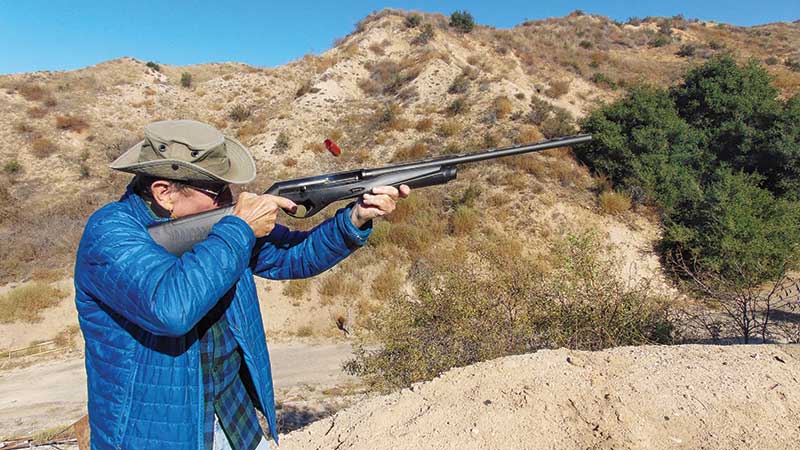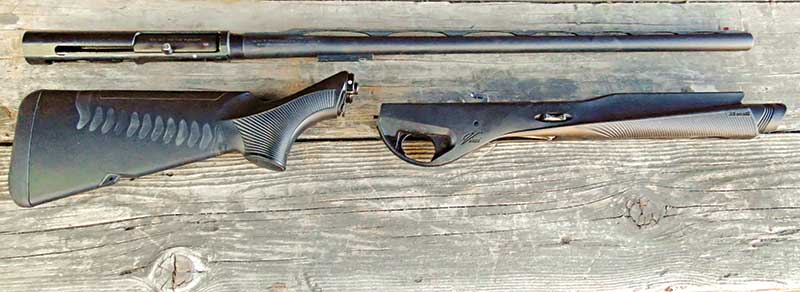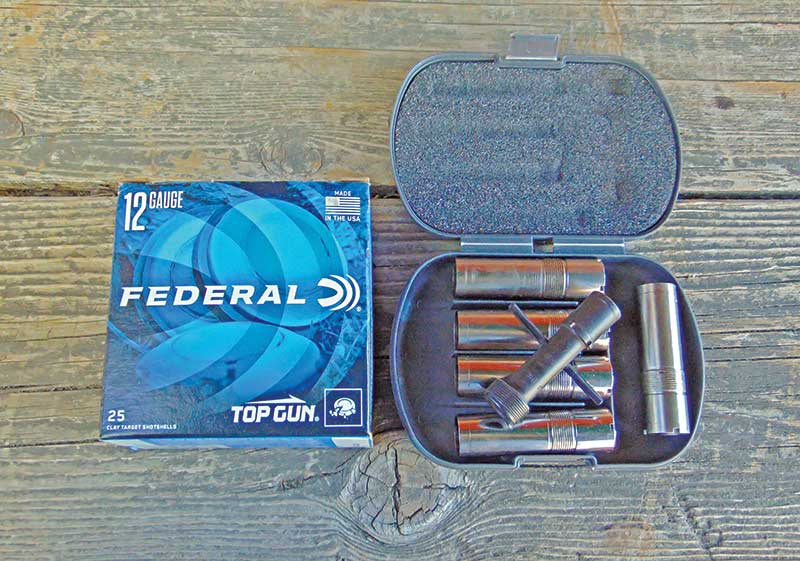The Benelli Vinci
A Modular Marvel
I can still recall the considerable splash Benelli’s seriously unconventional Vinci shotgun made on its 2009 introduction.
By then, of course, American shotgunners had had a couple of decades to acquaint themselves with the bombproof reliability and low maintenance requirements of Benelli’s earlier inertia models such as the Super 90, Super Black Eagle and Montefeltro.
But the Vinci was something else.
Name Game
The name came from Italy’s Renaissance-era art/science/engineering genius, Leonardo da Vinci. The gun was designed by Marco Gaudenzi and it literally redefined “modular” with a capital M.
It was available in 12-gauge only (3″ chamber) and with barrel lengths of 24″ or 28″. Depending on barrel length, the weight ranged from 6.7 to 6.9 lbs. — not petite but very reasonable for a field gun. The original offering came in basic black.
The Vinci’s three main elements? Gun Carriage/Magazine Tube Module, the Barrel/Receiver Module and the Stock Module. Once assembled, the gun had a look like nothing else.
The Vinci featured an in-line version of the company’s signature inertia action that dispensed with running the recoil spring into the stock and reduced muzzle climb. Then there was the ComforTech Plus synthetic stock to further civilize things. The Super Vinci — 3.5″ capable — was introduced in 2011. Later the company offered a Tactical version.
Recently, I had the chance to ask Benelli USA’s Director of Product Management, George Thompson — a key figure in the Vinci project — his thoughts on the gun.
“At the time it was produced, the Vinci was far and away the best performing shotgun in our lineup in just about every way. The ergonomics, pointability, recoil management, reliability were just great. It was the first gun to use the in-line inertia system, which had two major advantages. One, the single plane movement reduced muzzle flip, and two, it allowed moving the recoil spring out of the buttstock, making maintenance simple.
However, the Vinci was no longer offered here in the U.S. through Benelli USA in Accokeek, Md., although several variants are still available internationally through Italy’s Benelli Armi SpA.
Gone But Not Forgotten
I’ve got to confess I was a bit taken aback to discover this. I’ve used a Vinci nearly every dove season for the past 10 or 12 years, as well as on more than a few quail and duck hunts. I even used one on a weeklong Argentina dove hunt when the gun was premiered to assorted media types on its introduction.
Argentine dove hunts are pretty much the last word in high-volume shooting and the Vinci performed spectacularly — not a glitch or a bobble I can recall.
I’d used a 20-gauge gun on a prior Argentina trip and I was a bit leery of pounding my way through several cases of 2 ¾” 12-gauge field loads. But the Vinci — thanks in large part to the “flex action” of the ComforTech Plus stock — made things tolerable over the long haul. Still, I don’t think I’d want to run too many 3″ shells through the gun. The gun could take it, but — ComforTech or no — I’m not too sure about me.
Although the Vinci was not the first Benelli to feature the ComforTech stock (this distinction belonged to the Super Black Eagle 2 in 2004), the Vinci offered an improved version with enhanced recoil-absorbing chevrons.
In terms of balance, the Vinci is tough to beat. No gas tube up front certainly helps out in this respect. Mine came with a full complement of Crio choke tubes, although I must confess only two of them get much use, the I/C and M.
The Vinci’s run in the U.S. market was roughly a dozen years, a respectable time span, but still …
La Fine
I’ve let shooting buddies use mine and they all liked it. The only ergonomic gripe I’ve been able to discover was the crossbolt safety in a recess at the front of the trigger guard was a tough reach for short-fingered shooters, requiring releasing the pistol grip to flip it off.
Perhaps another reason was its unconventional look — shooters seem to love it or hate it. But whatever the reason, used specimens at auction can command starting bids close to the original retail price.
I was curious as to George Thompson’s thoughts on any lasting impact the Vinci had on Benelli USA:
“There are some aspects of the Vinci that are present in current guns, but of course they’ve been enhanced or modified to work in different platforms — things like grip angles, recoil reduction, and some internal components. If I was a betting man, I’d bet that at some point in the future the in-line inertia system is re-introduced to the USA, but we’ll see.”







